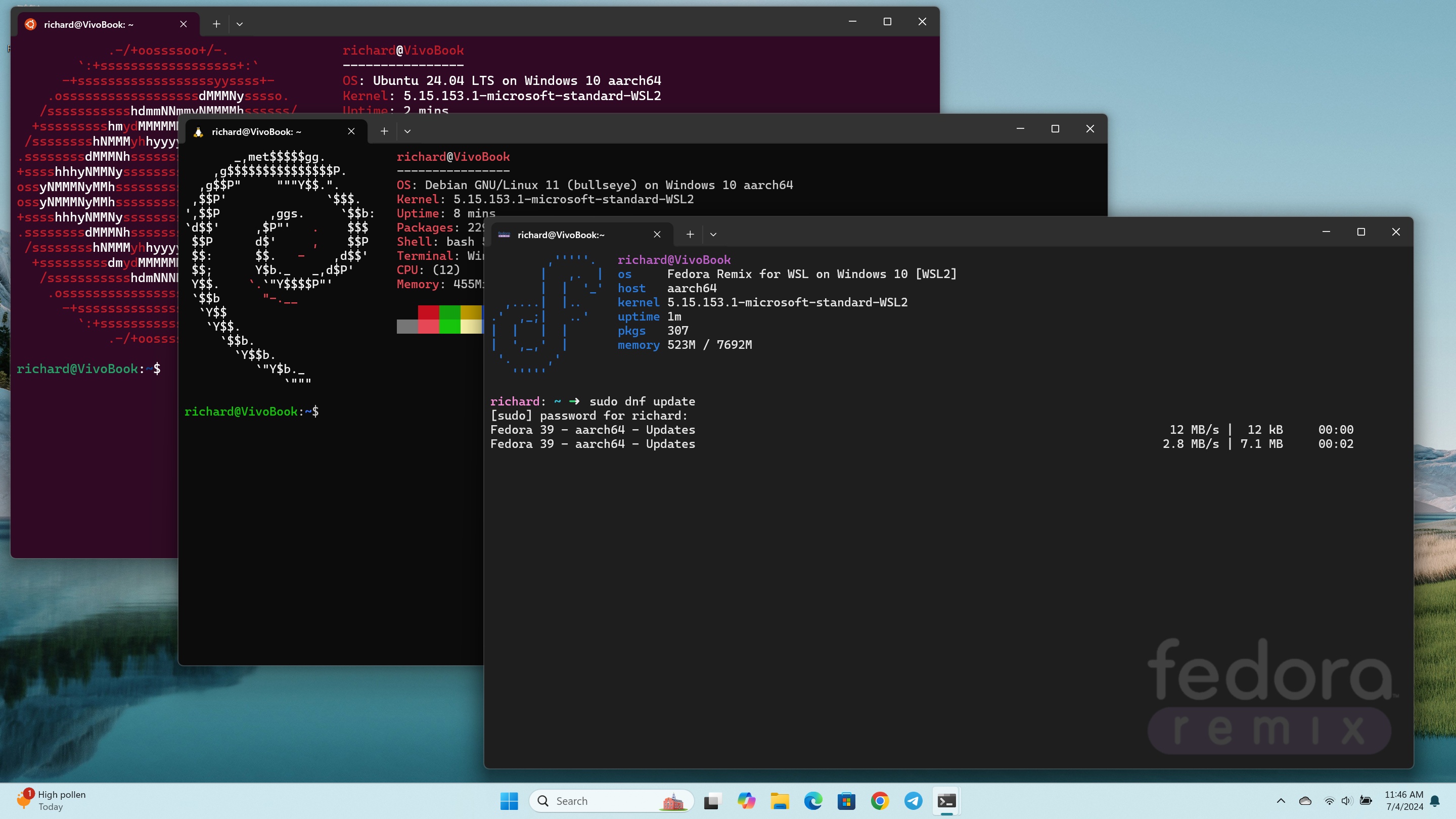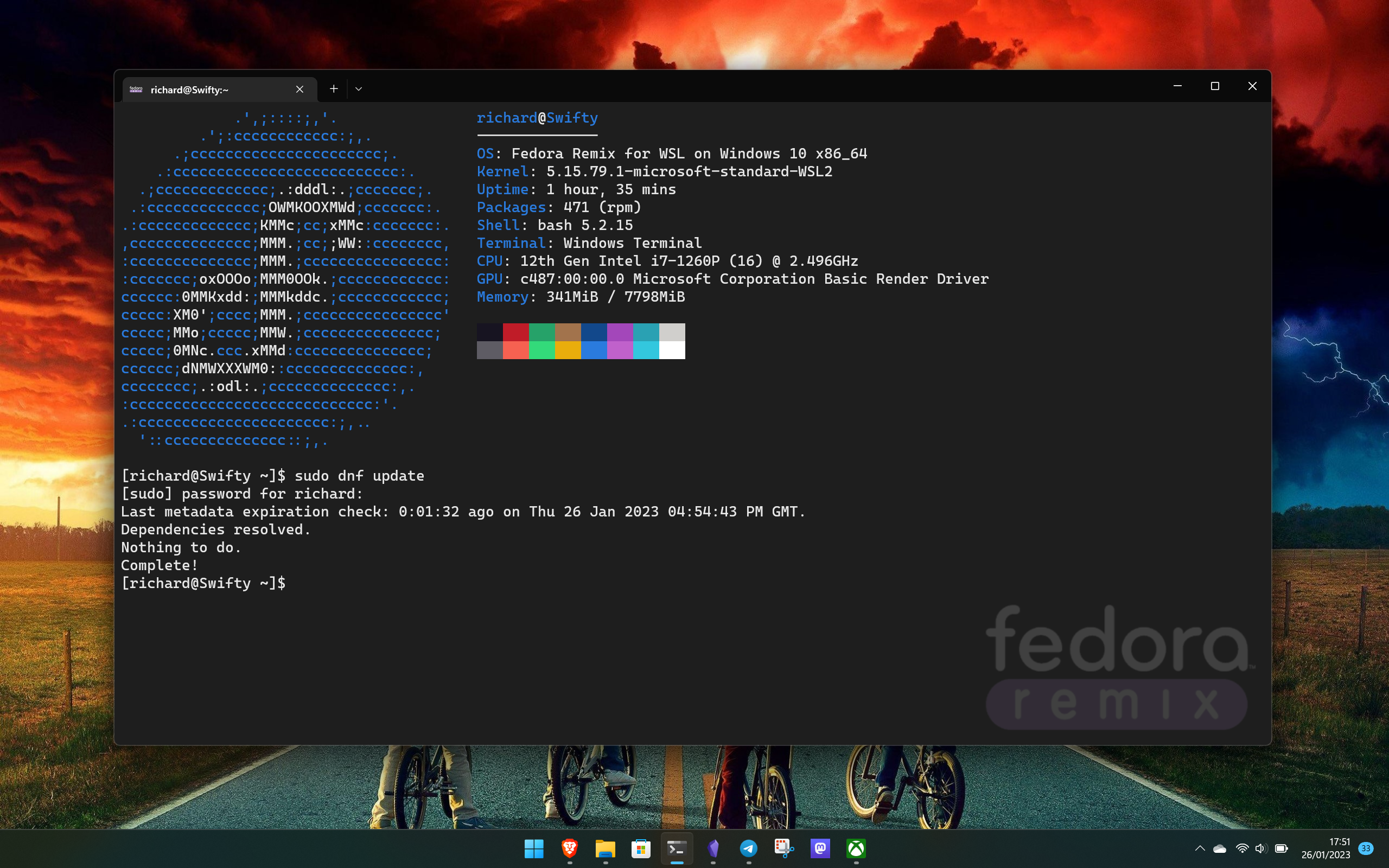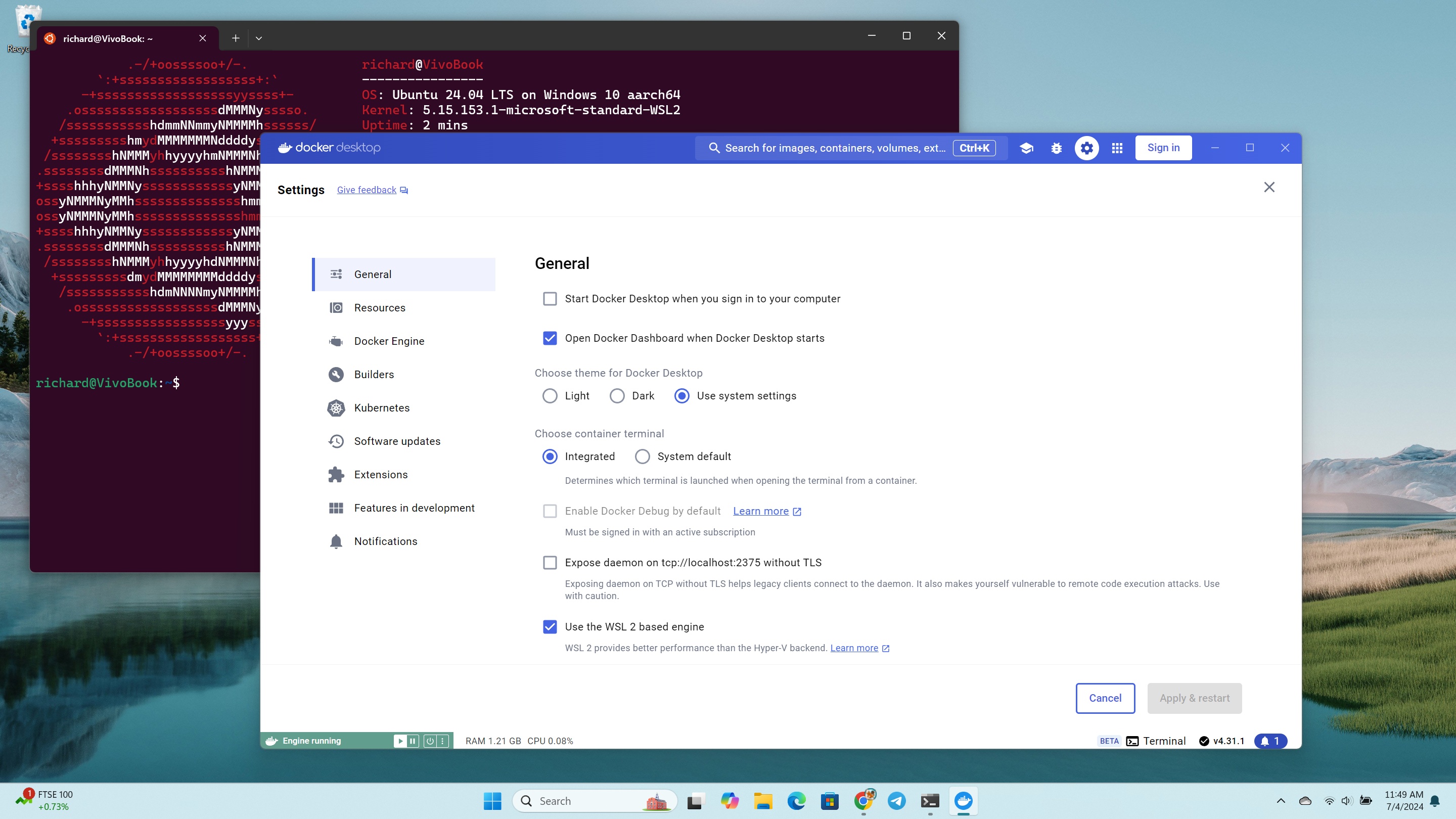
Despite not being a developer myself, I can appreciate how Windows 11 really is a powerhouse for those so inclined. One of the big aspects to that is the Windows Subsystem for Linux (WSL), offering seamless integration between Windows and Linux. While still virtualized, WSL is very close to 'native' Linux, with a full kernel, and its file system and apps are interoperable with Windows.
With the arrival of the new Snapdragon X Plus and X Elite powered Copilot+ PCs, there's a renewed spotlight shining on Windows on ARM. It's not something that developers or other WSL users have necessarily given much time of day before, but that's starting to change.
So, can you use WSL on a new Snapdragon laptop? Absolutely, and rather well, at that.
Linux is already well set up for ARM

Part of all this is that Linux is already well established on ARM. Major distributions such as Debian, Ubuntu and Fedora have ARM64 releases, and lest we forget that the Raspberry Pi, the tiny little single board computer (SBC) has been running on an ARM CPU since its inception.
That means you can simply install WSL and then install most of your favorite distros without any trouble. If you set up WSL using the standard "wsl --install" command in PowerShell, it will automatically pull Ubuntu's ARM64 version.
For a third party distro, if you're downloading from somewhere like GitHub, for example, you may just need to ensure you download the correct version yourself. Others, such as Fedora Remix, have a unified installer for x64 and ARM64.
If the distro supports ARM64, the package manager is already set up to pull the correct downloads, and while WSL's main focus isn't GUI apps, there are likewise ARM versions available for many.
How well does WSL perform on ARM, and can you use Docker?

In my experience so far, there's no discernible difference using WSL on the ASUS VivoBook S 15 with a Snapdragon X Elite versus any Intel or AMD laptop I've tried it on. To coin a phrase, it just works. Linux has been better equipped for ARM64 than Windows 11 in recent years. It's fast, and I haven't run into any roadblocks.
All the same interoperability with the Windows 11 host is there, too. Visual Studio Code has an ARM64 version, so the same integration with WSL can be applied here. Any existing workflows you have set up on an Intel or AMD PC for WSL should apply just the same.
Another important app many WSL users may be interested in is Docker, and there's good news on that front, too. Docker Desktop for Windows has a beta version for ARM that hooks into WSL 2. The same doesn't seem to be true of Hyper-V, so score one for Linux.
This is merely a brief, top line overview on the subject, but it's a question many have. The simple answer is that if you're buying a new Snapdragon-powered laptop, WSL will behave exactly as you're used to and there don't appear to be any roadblocks.
That's not to say that in specific use cases there may be issues with compatibility or performance, but in general, WSL on Snapdragon X Elite seems very good. The fact you can buy one and just get going is the best thing that needs to be said.







